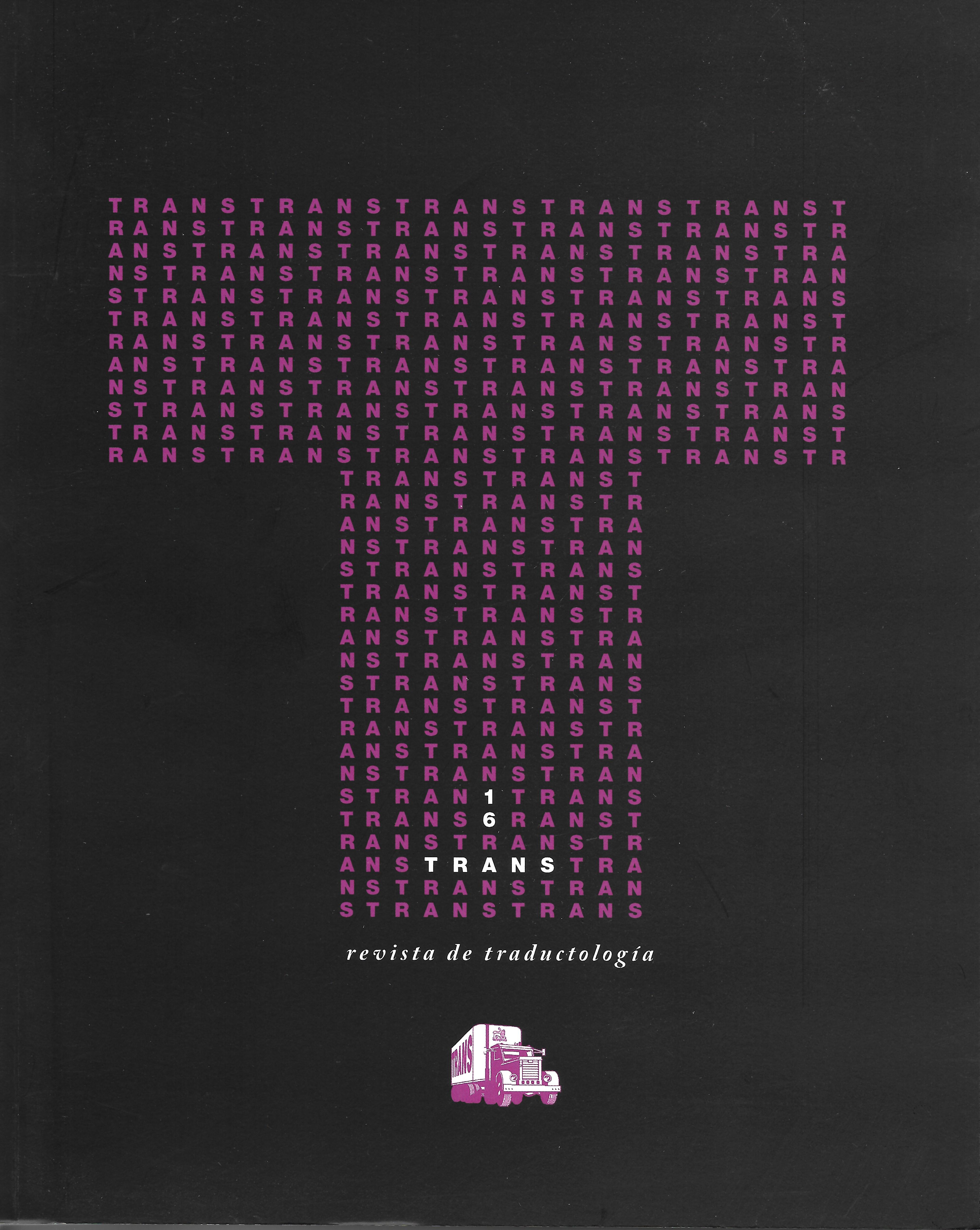Double aspectual interpretation of predicates in GermanSpanish translation of narrative sequences: Analyzing a corpus of student translations
DOI:
https://doi.org/10.24310/TRANS.2012.v0i16.3213Keywords:
translation from german into spanish, aspectuality, scenesand-frames theory applied to translation studies, past tenses in translation from german into spanish.Abstract
In the following article we are presenting a common phenomenon we notice in our everyday translation classes: the different aspectual interpretations given by prospective translators with Spanish L1 of German narrative sequences, given the same predicate whose nucleus is conjugated in a (German) past tense. The aim of this paper is to provide a description of this phenomenon, along with an attempt of explanation of it. First, a brief overview of the Cognitive Theory of Aspectuality is given, and its main concepts are related to the Scenes & Frames theory applied to Translation Studies. Then, data of a parallel corpus (DE>ES) from students´ translations is analyzed and the results explained. Finally, we suggest the calque of certain microframes of the German source text as a possible explanation for this double aspectual interpretation phenomenon and two new hypotheses are outlined, which constitute a starting point for deeper studies of this issueDownloads
Metrics
Publication Facts
Reviewer profiles N/A
Author statements
Indexed in
-
—
- Academic society
- N/A
- Publisher
- Universidad de Málaga
Downloads
Published
How to Cite
Issue
Section
License
All contents published in TRANS. Revista de Traductología are protected under the Creative Commons Attribution-NonCommercial-ShareAlike 4.0 International (CC BY-NC-SA 4.0) license. All about this license is available in the following link: <http://creativecommons.org/licenses/by-nc-sa/4.0>
Users can copy, use, redistribute, share and exhibit publicly as long as:
- The original source and authorship of the material are cited (Journal, Publisher and URL of the work).
- It is not used for comercial purposes.
- The existence of the license and its especifications are mentioned.
- ShareAlike — If you remix, transform, or build upon the material, you must distribute your contributions under the same license as the original.
There are two sets of authors’ rights: moral and property rights. Moral rights are perpetual prerogatives, unrenounceable, not-transferable, unalienable, imprescriptible and inembargable. According to authors’ rights legislation, TRANS. Revista de Traductología recognizes and respects authors moral rights, as well as the ownership of property rights, which will be transferred to University of Malaga in open access.
The property rights are referred to the benefits that are gained by the use or the dissemination of works. TRANS. Revista de Traductología is published in an open access form and it is exclusively licenced by any means for doing or authorising distribution, dissemination, reproduction, , adaptation, translation or arrangement of works.
Authors are responsable for obtaining the necessary permission to use copyrighted images.













21.png)
